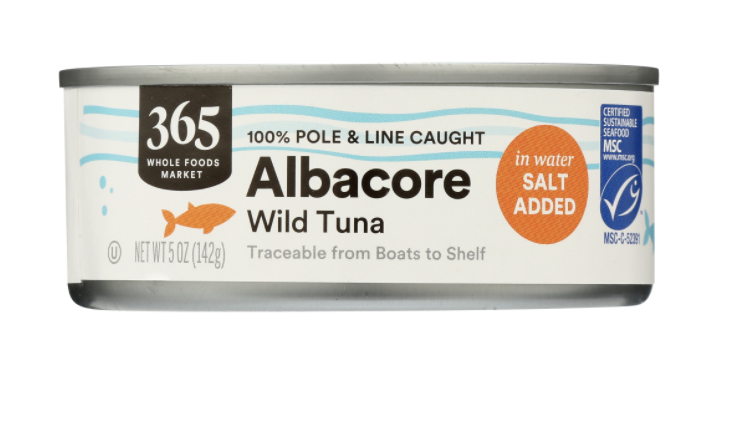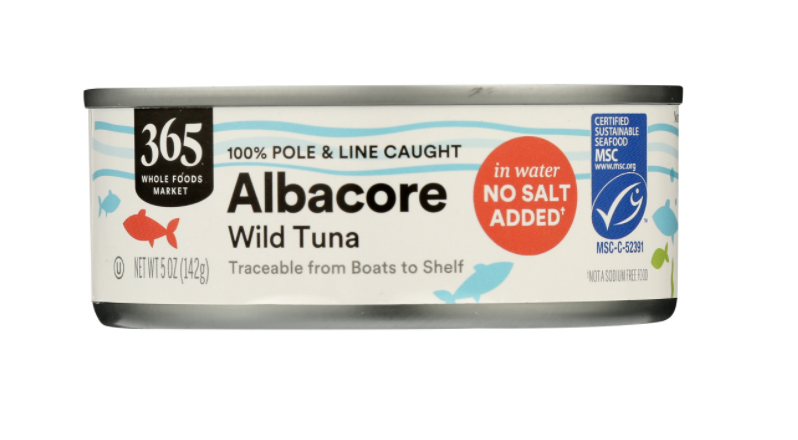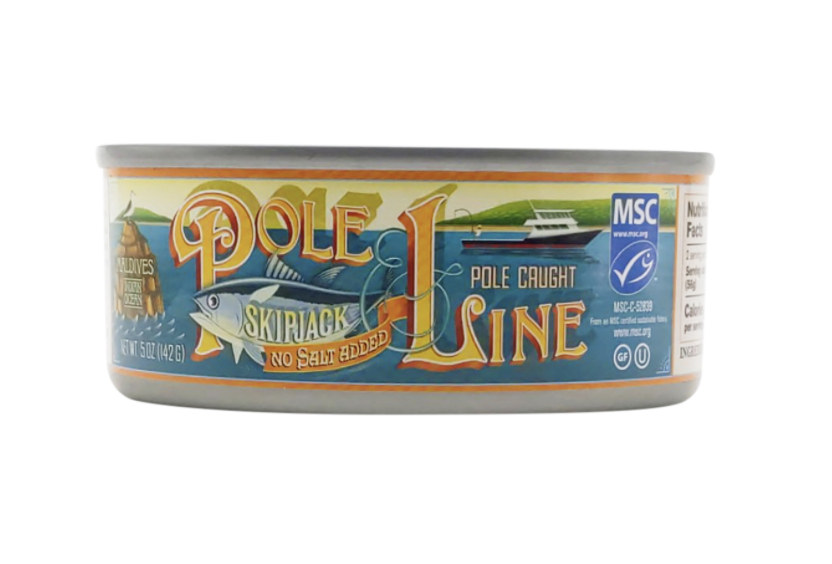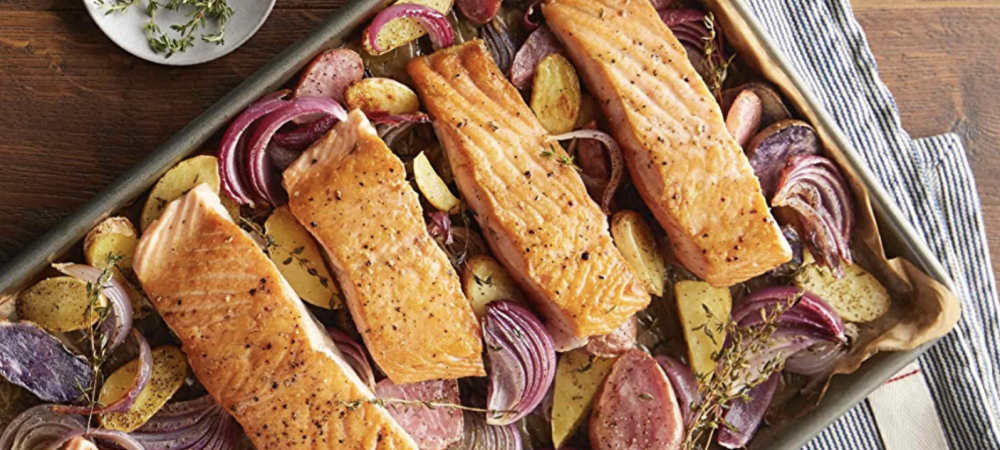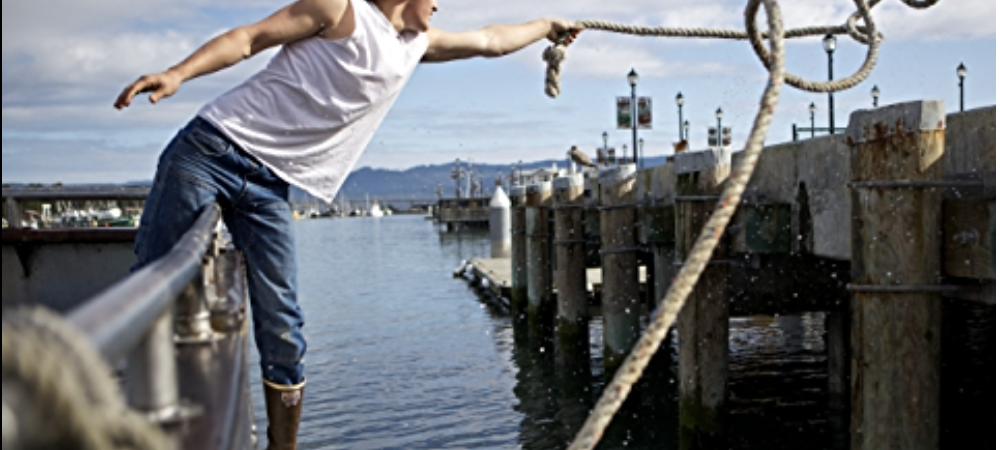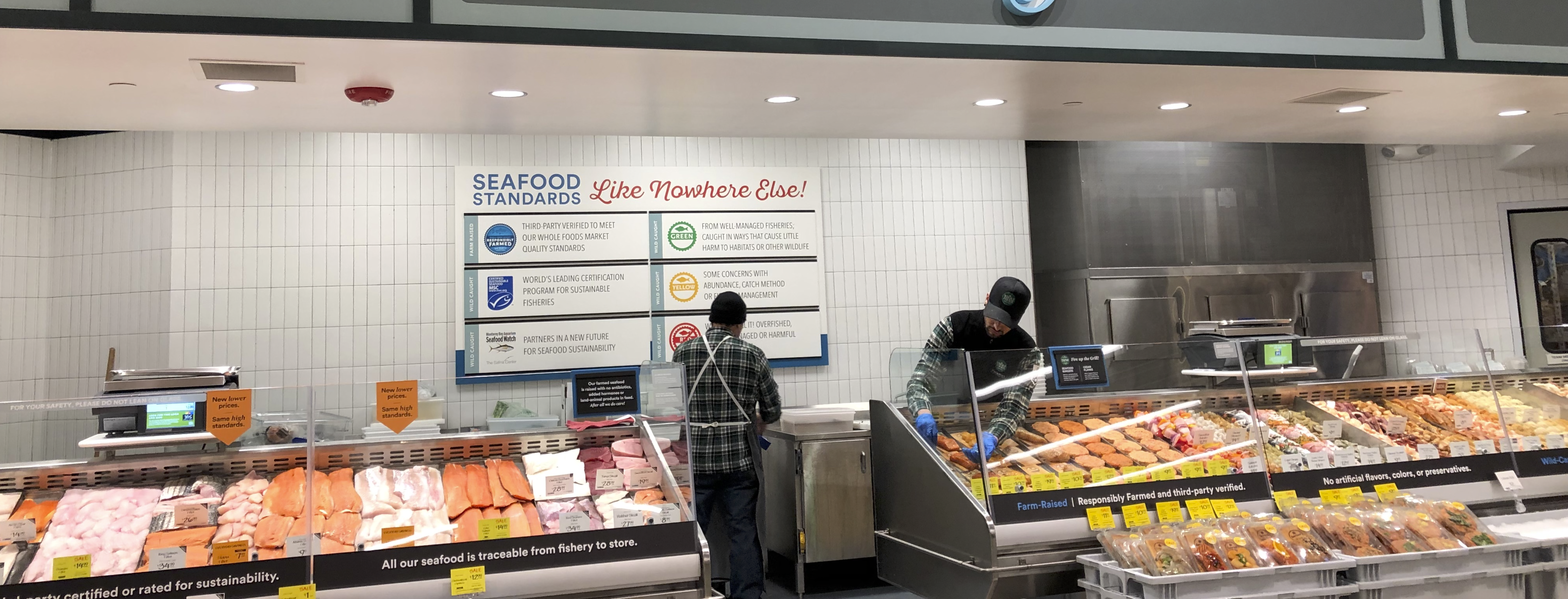
Whole Foods Market

Founded in 1980 in Austin, Texas, Whole Foods Market is the leading natural and organic foods supermarket, the first “Certified Organic” national grocer, and uniquely positioned as America’s Healthiest Grocery Store™. It currently has over 520 stores in the United States, Canada and the United Kingdom and employs approximately 105,000 team members.
Our 365 by Whole Foods Market brand offers more than 3,500 affordably priced and thoughtfully sourced products that not only meet our already strict standards, but also in many cases go above and beyond what we require of other brands. We prioritise worker rights and animal welfare, supply chain transparency, and thoughtful sourcing.
Whole Foods Market were the first national retailer to create storewide commitments to one-by-one tuna catch methods, spanning grocery products and prepared foods items. Under the policy, all canned tuna at Whole Foods Market must come from fisheries using only pole-and-line, troll, or handline catch methods, all of which take fish one by one, preventing bycatch and creating more jobs in coastal communities.


Products sold by Whole Foods Market
If you want to know where your seafood comes from, you’ve come to the right place. All canned tuna on Whole Foods Market's grocery shelves, such as their Pole & Line Caught and 365 by Whole Food Market brands, is sourced from fisheries using one-by-one catch methods, which prevent bycatch and create more jobs in coastal communities.
Whole Foods Market provide these tuna products to consumers in our stores throughout the United States, Canada and the United Kingdom. The assortment of products on offer will vary store to store and depending on the country. A sample of our product range can be viewed below.
At A Glance
- Alt-Energy Whole Foods Market's alternative energy sourcing
Whole Foods Market invests in different ways to source their energy. As of 2021, there were more than 70 stores and facilities supplementing traditional supply with power from rooftop solar installations. Moreover, they own more than 200 electric vehicle charging stations at their stores.
- Green Building Including a greenhouse on the roof!
Whole Foods Market joined EPA's GreenChill programme as a founding partner back in 2007. They have used this programme to implement their own green improvements to their own buildings. Their Brooklyn, NY store has solar, wind, a combined heat and power system and a state of the art refrigeration system, as well as a greenhouse on the roof!
- Order up! Ultimate comfort
Their instore fishmonger team will cut, peel and clean out any of your seafood for you, free of charge - fresh and instore, ready for your dinner.
—"Since we opened our first store in 1980, we've not only been passionate about healthy food, we’ve been passionate about a healthy planet. Joining the International Pole & Line Foundation amplifies our collective efforts to be a positive force for change for our oceans and the fishing communities who depend on them. IPNLF has been a key partner, helping us to develop our canned tuna sourcing policy, and supporting Whole Foods Market’s mission to move the seafood industry toward greater sustainability."
Our Fisheries
Company Policies and Reports
All the seafood in our seafood department is responsibly farmed or sustainable wild-caught (that includes frozen and breaded options, appetisers, smoked seafood and seafood dips). If it doesn’t meet our standards, we won’t sell it. No exceptions.
Our seafood is traceable to farm or fishery, and we work hard to source it only from responsibly managed farms and abundant, well-managed wild fisheries. Year after year, we’re recognised by Greenpeace for our rigorous seafood sustainability practices.
Fisheries Improvement Toolbox (FIT) Engagement
In 2018, Whole Foods Market and IPNLF member Tonnino teamed up to release a line of pole-and-line tuna exclusively available at Whole Foods Market stores. This move aligns with their commitment that all canned and prepared tuna from Whole Foods Market must come from one-by-one fisheries: pole-and-line, handline or troll method. The most socially and environmentally sustainable choice.
The one-by-one method is recognised as the most sustainable choice of fishing. It is an active form of fishing, meaning that fishers are always engaged with their catch. This ensures very little bycatch, lost gear, or overfishing.


